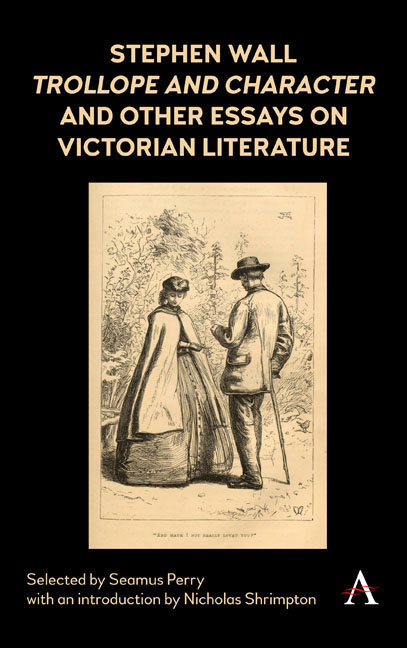Introduction: Stephen Wall and Trollope
Published online by Cambridge University Press: 25 July 2018
Summary
Stephen Wall published his first essay on Trollope in 1972, early in a decade that has since come to be celebrated for its ‘re- invigoration of Trollope studies’. Wall's argument was certainly invigorating. An introduction to the Penguin edition of Can You Forgive Her?, it supplied a robust and ingenious defence of a book Henry James had once dismissed as trivial: ‘Can we forgive Miss Vavasour? Of course we can, and forget her, too, for that matter’. Wall's introduction reclaimed, not just Alice Vavasour, but the entire novel as imaginative creations that deserved our serious attention. As it did so, it struck several of the notes that would be sounded again, more reverberantly, in his later work. Trollope is ‘more interested in the particular case than the general principle’. The ‘remarkable tenacity of his imagination’ makes possible his achievement ‘in maintaining and deepening his knowledge’ of characters. Trollope's moral subtlety ‘makes one realize afresh how inadequate terms such as “hero” and “villain” are’ in his novels. And (a bold claim this in 1972) ‘the integration of different but concurrent plots into some sort of “organic” unity may not be as necessary for artistic success as the modern criticism of Victorian fiction often presupposes’.
At the time, both this introduction and Wall's slightly later article on ‘Trollope, Balzac, and the Reappearing Character’ (Essays in Criticism, 1975) were part of a widespread reawakening of critical interest in Trollope that had actually begun in the late 1960s. Like Dickens, Trollope had fallen into scholarly disrepute without ever losing his popular audience. Unlike Dickens, whose academic reputation began to recover in the 1940s, Trollope remained beyond the pale. He was, it seemed, a mere entertainer: a mechanical producer of shapeless and intellectually insignificant stories. Michael Sadleir's Trollope, a Commentary, first published in 1927, and the magisterial Bibliography that followed it a year later, might seem to have turned the tide. But Sadleir's defence of Trollope had an apologetic quality that reflected the power, at the time, of the Jamesian model of what prose fiction should be. James had praised the ‘beauty of intention and of effect’ and the ‘composition, distribution, and arrangement’ he found in Flaubert and Turgenev.
- Type
- Chapter
- Information
- Publisher: Anthem PressPrint publication year: 2018



